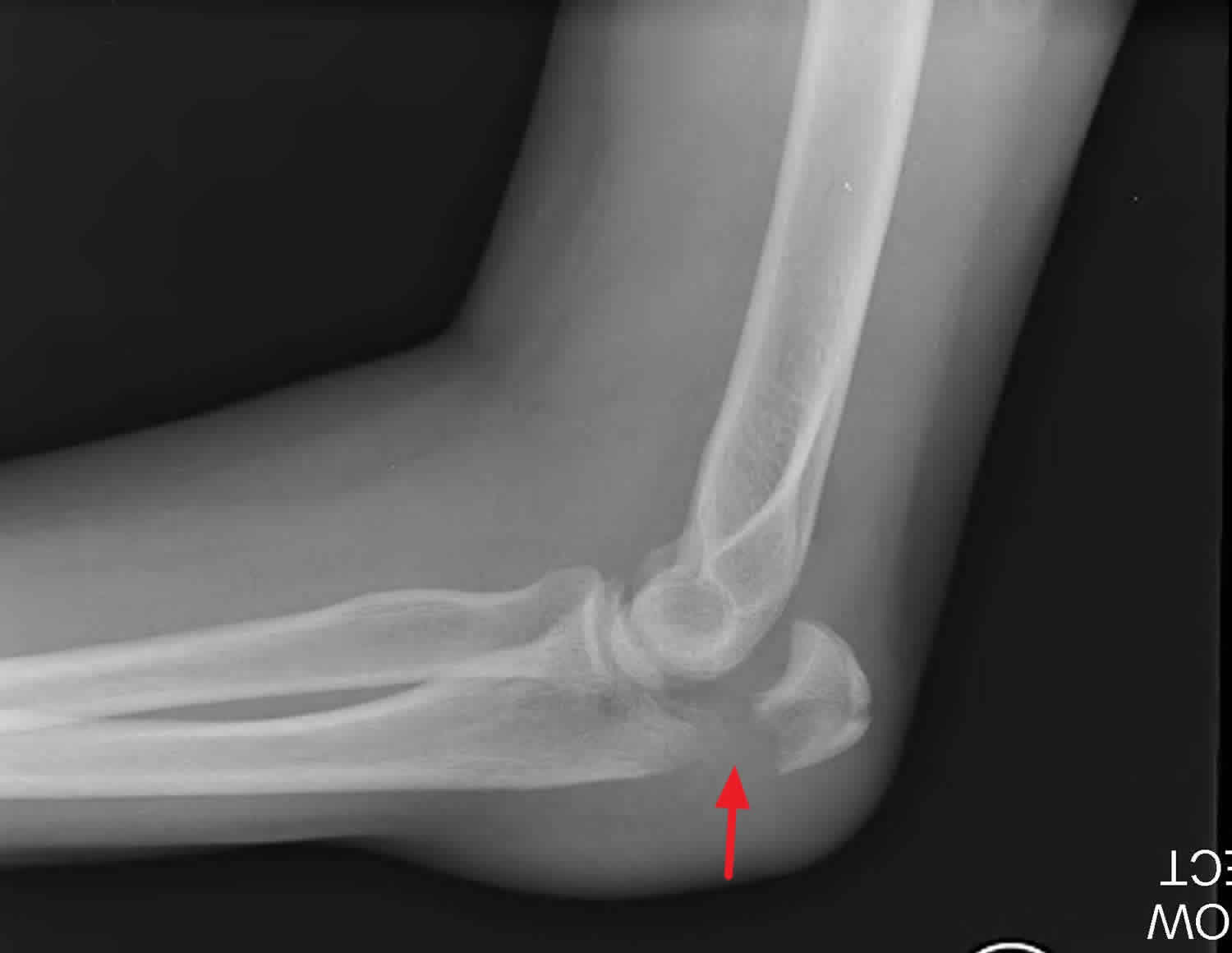

Olecranon fractures are rare in children, constituting only 5 to 7% of all elbow fractures. For example: extensive comminutions, elderly patients with osteoporotic bone, and small or non-union fractures.

This method is indicated for cases when open reduction and internal fixation is unlikely to be successful. Plates can be used for all proximal ulna fracture types including Monteggia fractures, and comminuted fractures.

Single intramedullary screws can be used to treat simple transverse or oblique fractures. This procedure is performed using Kirschner wire (K-wires) which converts tensile forces into compressive force. It is typically reserved for noncomminuted fractures that are proximal to the coronoid. Tension band fixation is the most common form of internal fixation used for non-comminuted olecranon fractures. Most olecranon fractures are displaced and are best treated surgically: Tension band fixation Elbows may be immobilized at 45°–90° of flexion for 3 weeks, followed by limited (90°) flexion exercises. In fractures with little or no displacement, immobilization with a posterior splint may be sufficient. Type E - More distal fracture, extra-articularįracture (left) and repair (right) with three pins, wires, and incision closure with staples Nondisplaced fractures.Type III - Oblique and Transverse (displaced).Type I - Nondisplaced - Displacement does not increase with elbow flexion.Type C: Complex fractures of both the proximal radius and ulna.Type B: Intra-articular fractures of either the radius or ulna.Type A: Extra-articular fractures of the metadiaphysis of either the radius or the ulna.This classification incorporates all fractures of the proximal ulna and radius into one group, subdivided into three patterns: It also may be either non-comminuted (Type IIIA) or comminuted (Type IIIB). Type III: Displaced unstable fracture – In this case, the fracture fragments are displaced and the forearm is unstable in relation to the humerus.It can be either non-comminuted ones (Type IIA) or comminuted (Type IIB). That is why there is no elbow instability. Type II: Displaced, stable fractures – In this pattern, the proximal fracture fragment is displaced more than 3 mm, but the collateral ligaments are intact.Type I: Non-displaced fracture – It can be either non-comminuted ones (Type IA) or comminuted (Type IB).It is composed of three types, and each type is divided in two subtypes: subtype A (non-comminuted) and subtype B (comminuted). There are several classifications that describe different forms of olecranon fractures, yet none of them have gained widespread acceptance: Mayo classification īased on the stability, the displacement and the comminution of the fracture. A true lateral x-ray is essential to determine the fracture pattern, degree of displacement, comminution, and the degree of articular involvement. Frontal and lateral X-ray views of the elbow are typically done to investigate the possibility of an olecranon fracture. Then a complete neurological exam of the upper limb should be documented.
Olecranon fracture skin#
To assess an olecranon fracture, a careful skin exam is performed to ensure there is no open fracture. Powerful pull of the triceps muscle can also cause avulsion fractures. Indirect trauma: by falling and landing with an outstretched arm. Trauma to the elbow often results in comminuted fractures of the olecranon. ĭirect trauma: This can happen in a fall with landing on the elbow or by being hit by a solid object. "Side-swipe" injury when driving a motor vehicle with an elbow projecting outside the vehicle resting on an open window's edge is an example. motor vehicle accidents), and due to falls when the triceps are contracted. Typically they are caused by direct blows to the elbow (e.g. Examination can bring out a palpable defect at the site of the fracture. Due to the proximity of the olecranon to the ulnar nerve, the injury and swelling may cause numbness and tingling at the fourth and fifth fingers. Swelling over the bone site is seen and an inability to straighten the elbow is common. People with olecranon fractures present with intense elbow pain after a direct blow or fall. 4.2.2 Intramedullary fixation and plates.


 0 kommentar(er)
0 kommentar(er)
